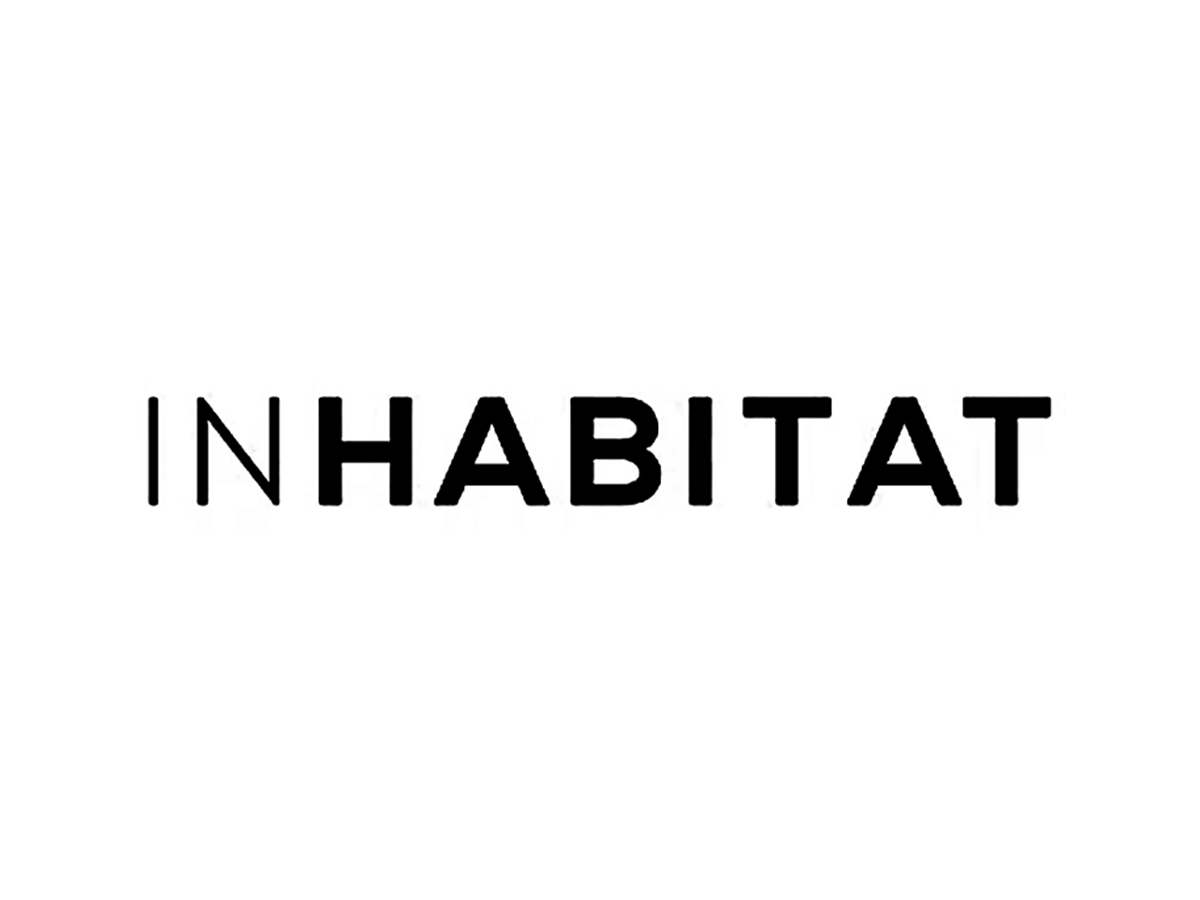Documentary about Floating Cities – Creative Ideas to Combat Climate Change
“Exploring the Future: The Rise of Floating Cities” is a documentary that delves into the emergence of floating cities as a response to rising sea levels caused by climate change. The film highlights the visionary efforts of different experts, including Koen Olthuis of Waterstudio, who is constructing a sustainable floating city in the Maldives, utilizing seawater for cooling purposes. While showcasing the potential of floating cities, the documentary also explores the challenges and complexities involved, such as engineering requirements, socio-economic considerations, and potential impacts on ecosystems. Through captivating visuals and expert analysis, the film provides viewers with a comprehensive understanding of this cutting-edge architectural movement and its potential to reshape urban living in the face of the climate crisis.
https://www.dw.com/en/floating-cities-creative-ideas-to-combat-climate-change/a-65804881
Planet E – Floating Cities
Sea levels are rising due to climate change. Many coastal cities are at growing risk of flooding. Architects are trying to react to this development with new ideas, such as floating cities. Architect Koen Olthuis of Waterstudio is constructing a floating city in the Maldives, sustainably cooled with sea water.
Radio NPO1 – Het woningtekort vraagt om creatieve oplossingen
Het woningtekort vraagt om creatieve oplossingen. “Kleine creatieve oplossingen zetten geen zoden aan de dijk, we moeten over de dijk het water op!”
The housing shortage demands creative solutions. “Small creative solutions won’t make a significant impact, we need to go over the dike and onto the water!”
Waterstudio proposes the Maldives Floating City as a solution to rising sea levels
By Mens Gear
2023.March
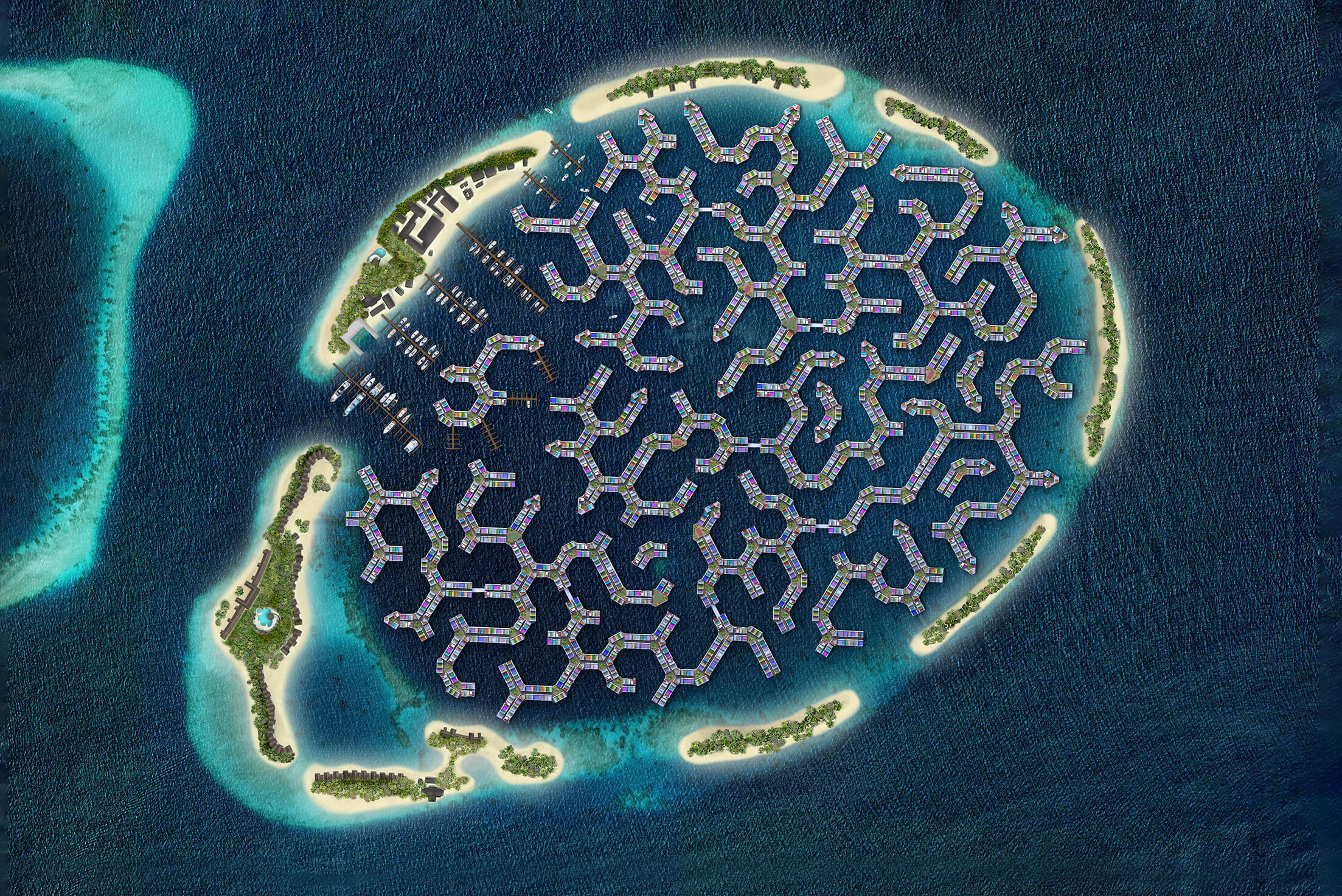
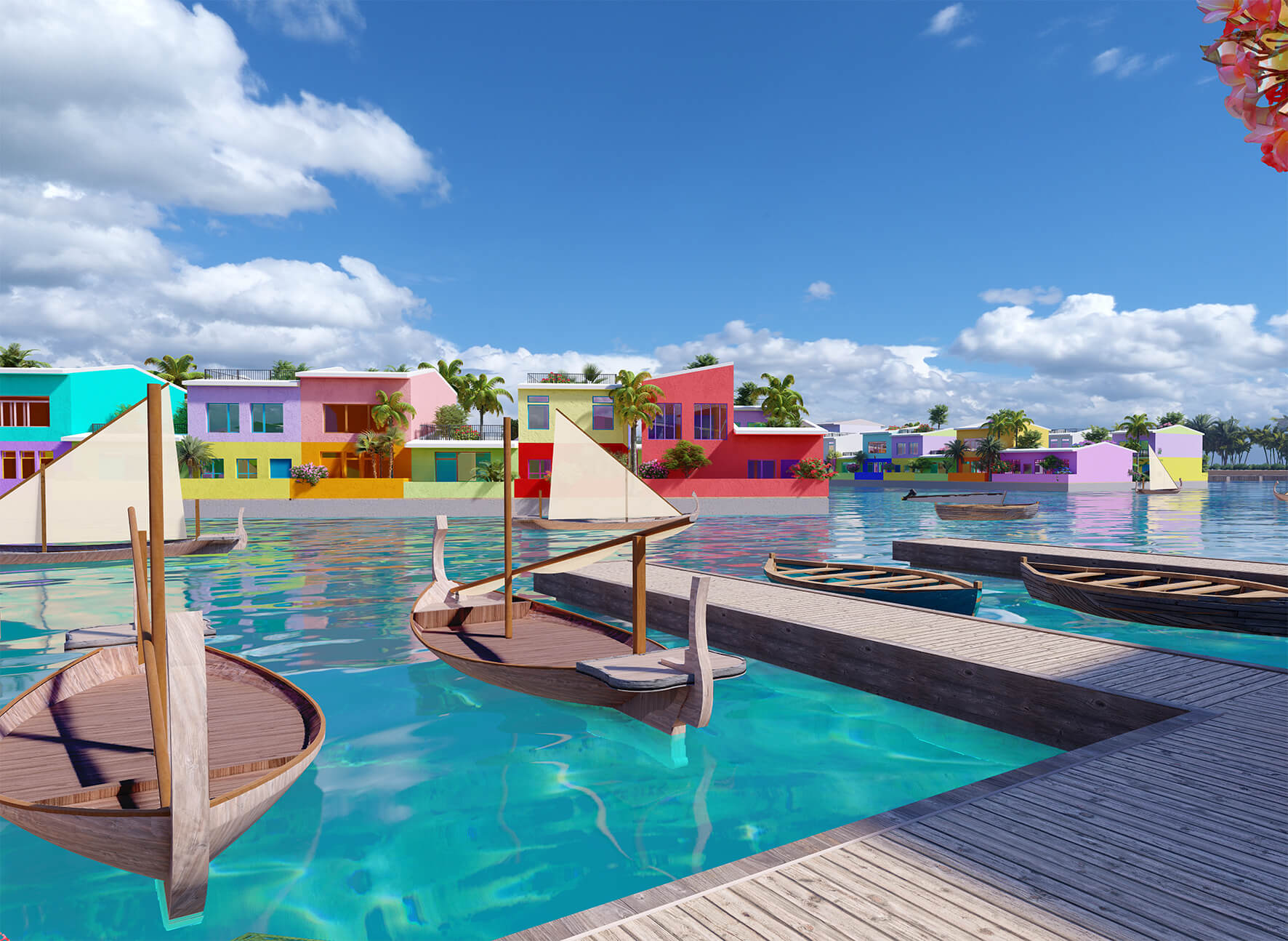
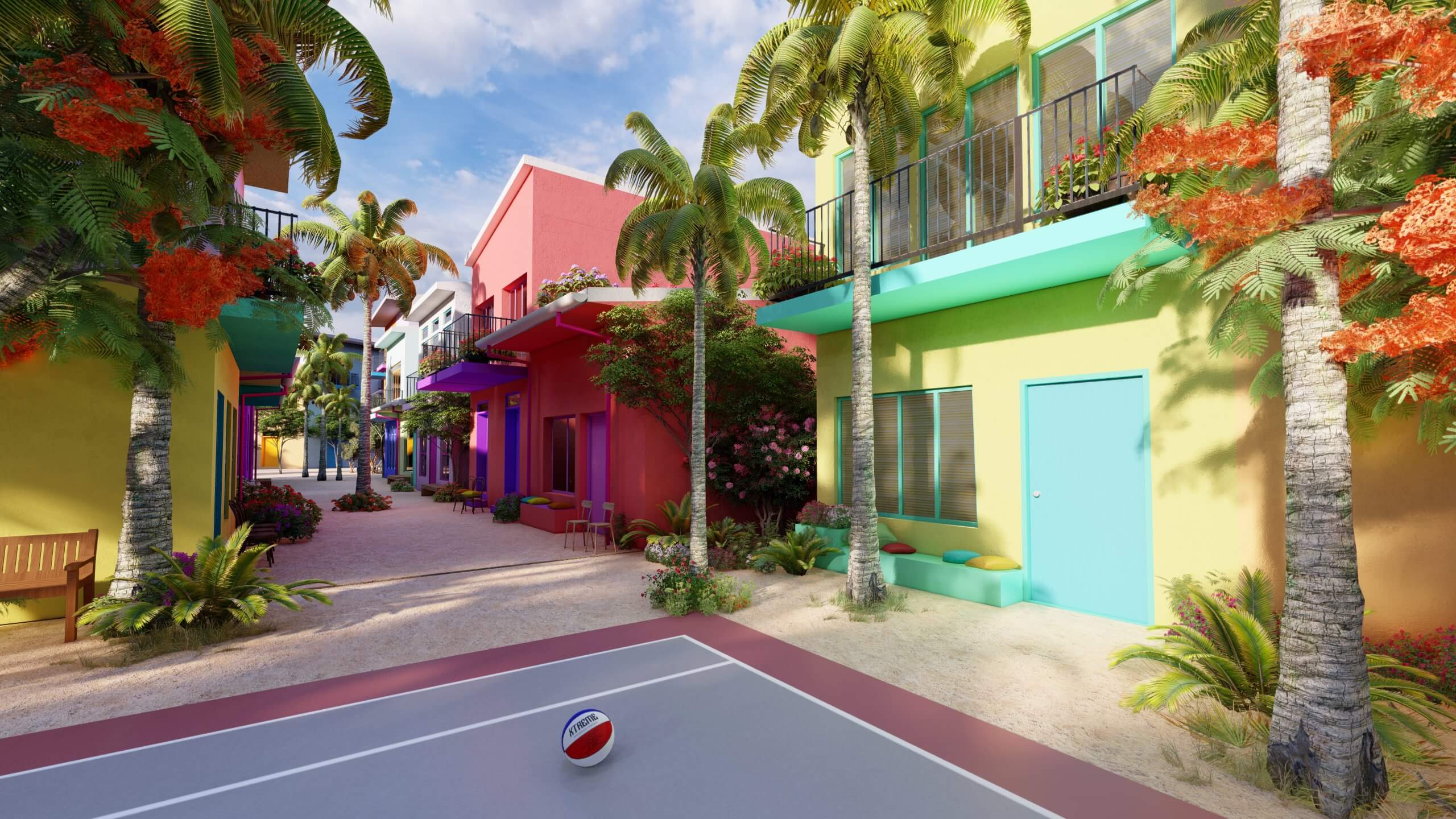
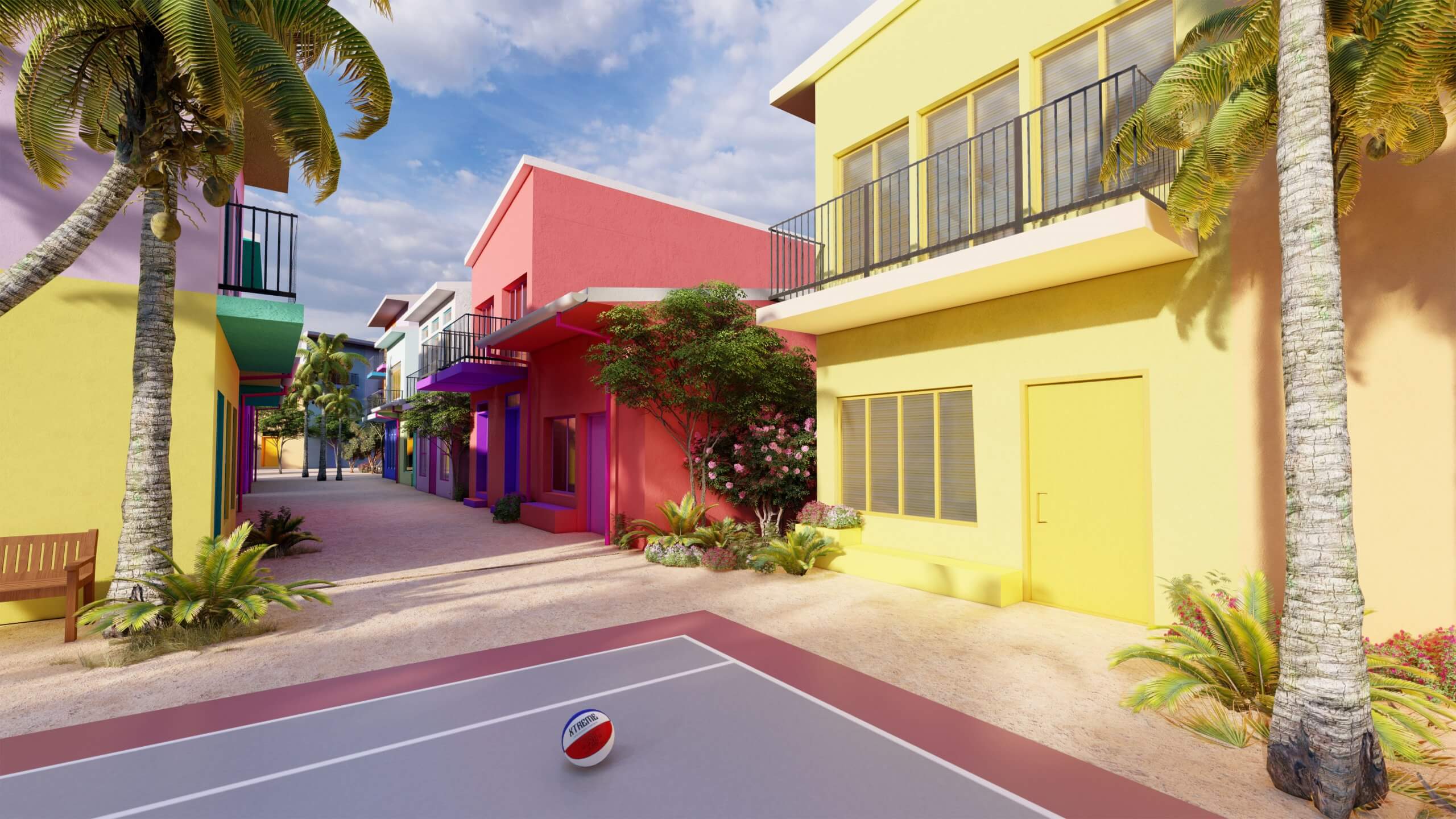
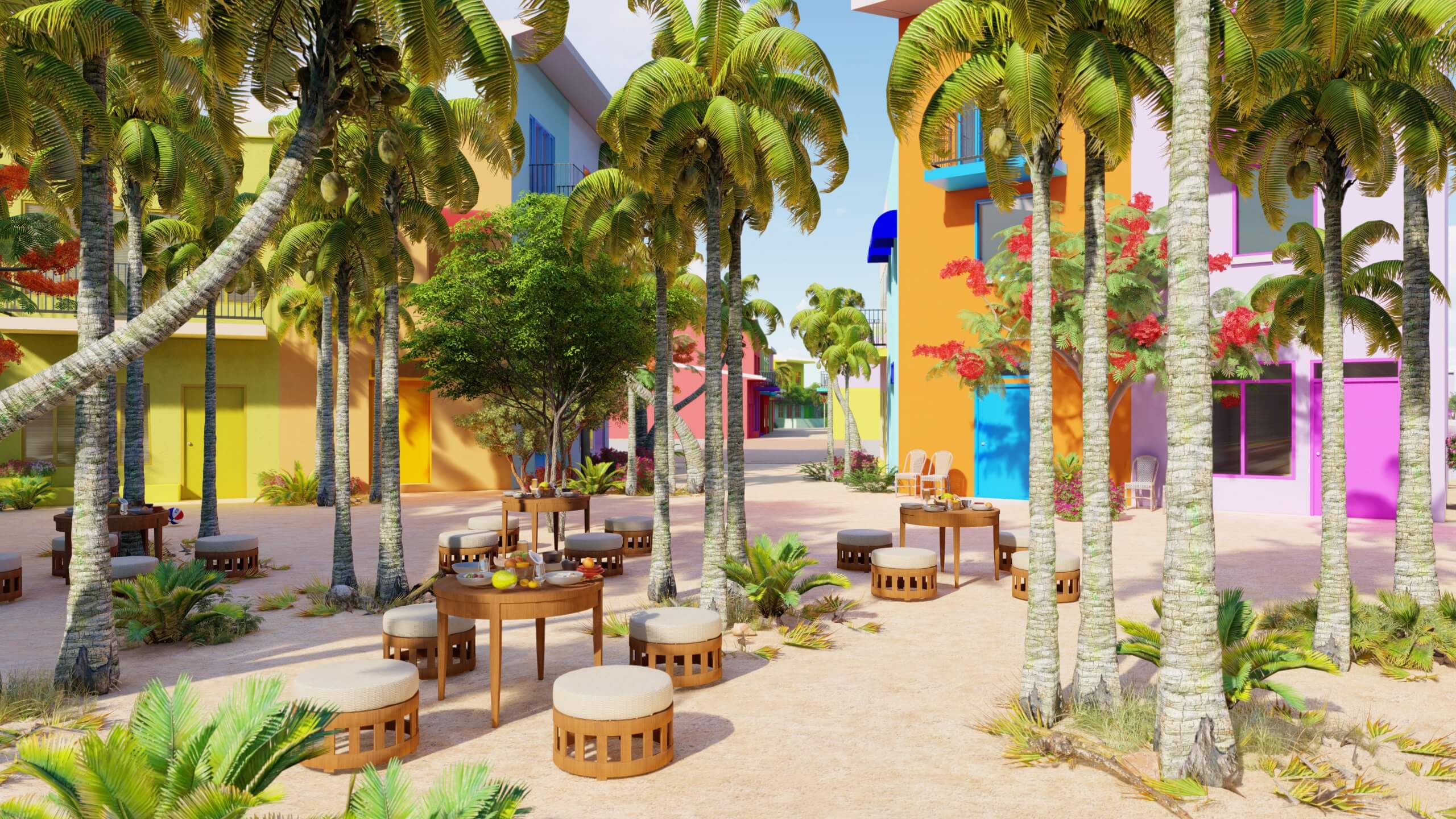
First island of Maldives Floating City has arrived near Male
Exciting news, the first island of the Floating City in the Maldives has arrived near Male!
The first island of the Floating City in the Maldives near Male. Inspired by traditional Maldivian sea-faring culture and developed in close cooperation with Maldivian authorities. MFC homes will eventually be joined by hotels, restaurants, stylish boutiques and a world-class marina. Maldives Floating City is the first of its kind across the globe – developed to equally embrace sustainability and livability
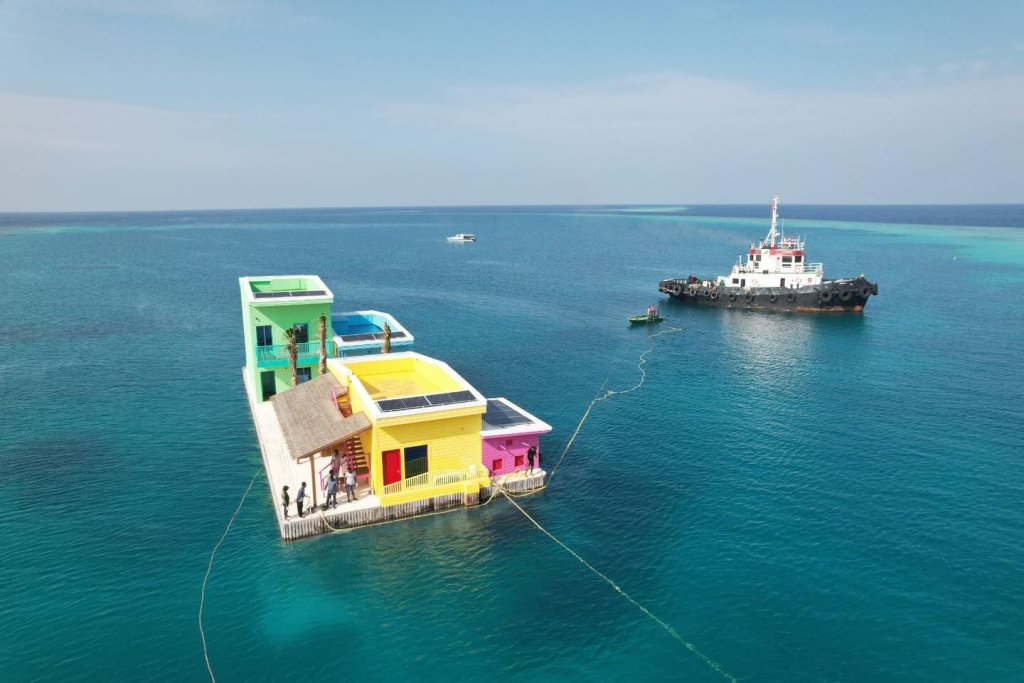
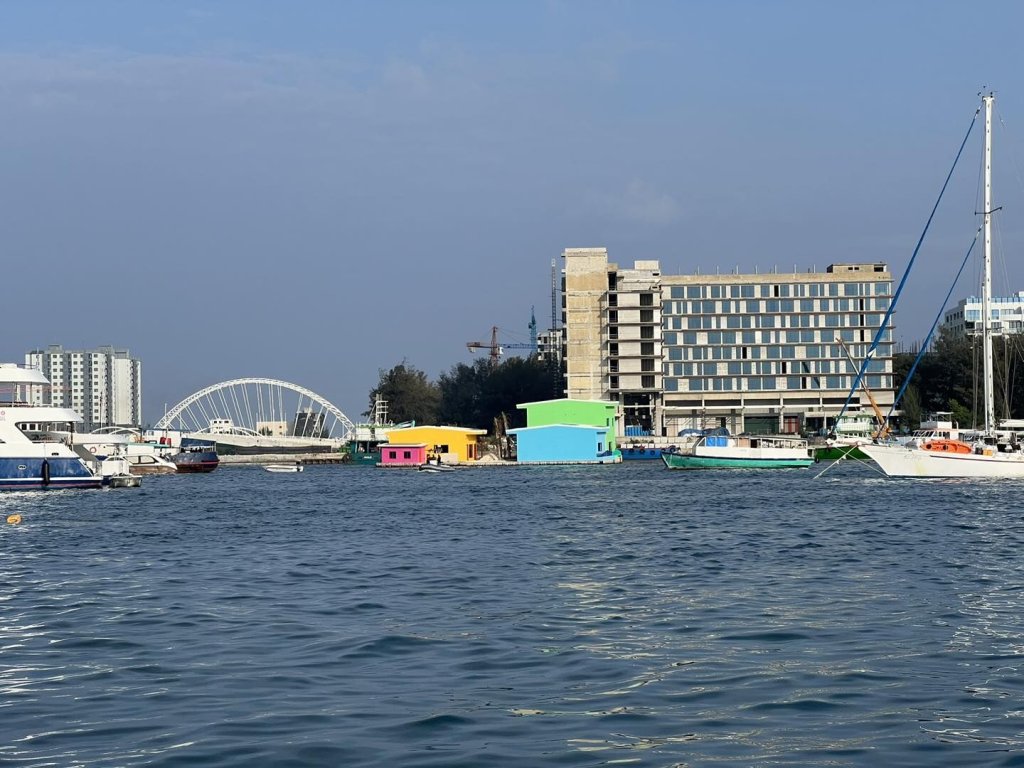
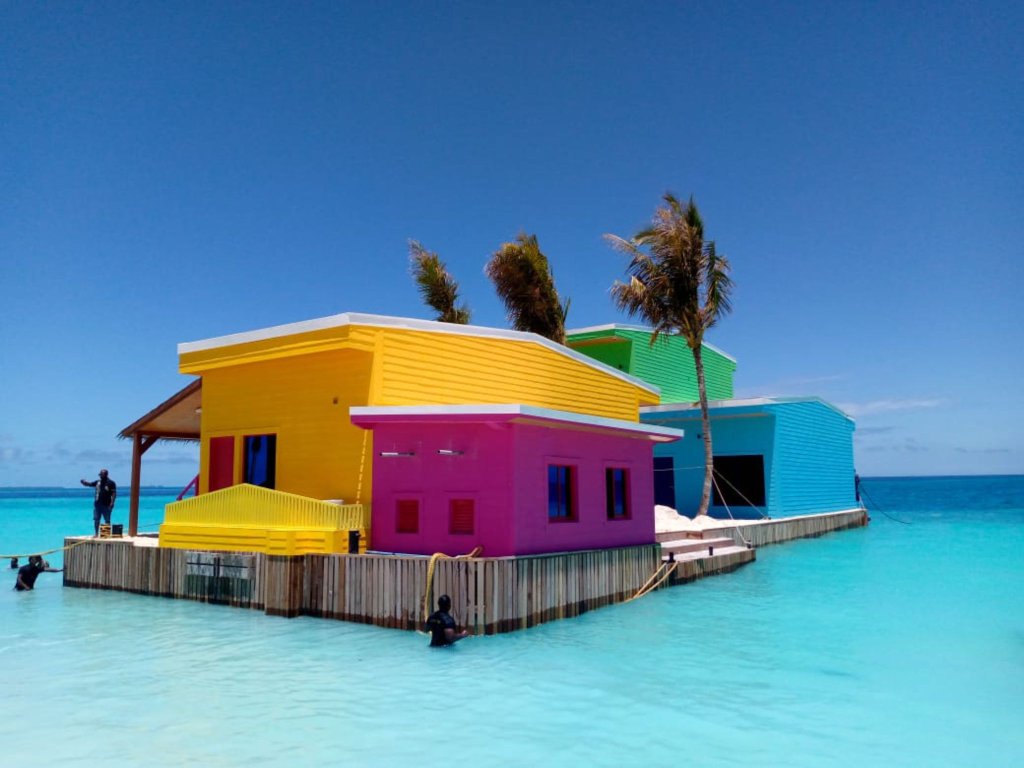
12 futuristic cities being built around the world, from Saudi Arabia to China
By Maan Jalal
The National News
2022.August.02
The Mirror Line, Chengdu Future City and Telosa are among the exciting projects in the pipeline
As the world changes, so must our cities.
With world’s population continuing to increase and climate change drastically affecting our environment, many metropolises are struggling to grow, develop and even support citizens within current and traditional urban designs.
Governments, entrepreneurs and technology companies are employing some of the world’s leading architects and designers to rethink the idea of cities, how people can interact and how to live within them.
From reclaimed land, groundbreaking skyscrapers in the desert and cities rising in the metaverse, here are 12 incredible futuristic cities redefining the urban spaces we live in.
The Mirror Line, Saudi Arabia
Designers: Morphosis Architects
Location: Saudi Arabia
The $500 billion Neom project in Saudi Arabia is set to be home to a record-setting 170-kilometre-long skyscraper called the Mirror Line.
It will be the world’s largest structure, comprising of two buildings up to 490 metres tall, running parallel to each other. The structures will be connected by walkways and a high-speed transport system, which will connect one end of the city to the other in 20 minutes.
Designed by the US-based Morphosis Architects, The Mirror Line promises to be walkable city, with no cars and zero carbon emissions.
BiodiverCity, Malaysia
:quality(70)/cloudfront-eu-central-1.images.arcpublishing.com/thenational/SUUS3GUP7RGN7HLZQWHC4SBRCM.jpg)
Designers: Bjarke Ingels Group
Location: Penang Island, Malaysia
BiodiverCity is a planned sustainable city made of three artificial islands built off the shore of Penang Island in Malaysia.
A city where people and nature co-exist, each of BiodiverCity’s lily pad-shaped islands will be home to between 15,000 and 18,000 residents. Structures in the city will be built using natural materials such as timber, bamboo and concrete created from recycled materials.
The city is also planned to be a global travel destination with 4.6km of public beaches and 600 acres of parks along with a 25km waterfront. BiodiverCity will also be a car-free environment, where pedestrians can use the planned autonomous water, air and land public transportation network.
Chengdu Future City, China
:quality(70)/cloudfront-eu-central-1.images.arcpublishing.com/thenational/XEZURS55LNALTHMKE2R7PT2ZLA.jpg)
Designers: OMA
Location: China
China’s planned Chengdu Future City is challenging conventions of urban planning by proposing a master plan not based on traditional, car-oriented road networks.
The six distinct zones of the city will be connected though a smart mobility network using automated vehicles. The zones will also be pedestrian-friendly and within a 10-minute walk of each other.
The 4.6-square-kilometre site also includes an international education park where buildings, including a university, will have landscaped terraces, designed to be an extension of the natural formed landscape.
Akon City, Senegal
:quality(70)/cloudfront-eu-central-1.images.arcpublishing.com/thenational/SAEC42OEGFCSFGC7II35ZYJQAE.jpg)
Designers: Bakri & Associates Development Consultants
Location: Senegal
Akon City is a planned 2,000-acre futuristic city that will be located along the Atlantic coast, in south of Dakar, Senegal.
Conceived and launched by singer and entrepreneur Akon, the smart city will be eco-friendly and powered by renewable energy. Described by Akon as a “real-life Wakanda”, a reference to the film Black Panther that inspired him, Akon City is set to have large skyscrapers, shopping malls, parks, universities, a stadium and a technology hub.
Akon City’s goal is to stimulate the local economy and create jobs while using the latest technologies of blockchain and cryptocurrency.
Telosa, the US
:quality(70)/cloudfront-eu-central-1.images.arcpublishing.com/thenational/5UWYJNB5LJFBPLSGIZ2V72FLOE.jpg)
Designers: Bjarke Ingels
Location: The US
Announced in September 2021, Telosa is a proposed city conceived by billionaire Marc Lore, to be built somewhere in the US western desert.
With a planned population of five million people by 2050, Telosa will be a “15-minute city” where all amenities from schools, workplaces and goods and services will be a 15-minute commute from residents’ homes.
Lore hopes Telosa will be the most sustainable city in the world where no vehicles powered by fossil fuels will be permitted. His vision also includes a reformed version of capitalism where wealth is created in a fair way, keeping residents’ quality of life as a priority.
Woven City, Japan
:quality(70)/cloudfront-eu-central-1.images.arcpublishing.com/thenational/HHCCCXL64RHEDCQC7FLCOP3YV4.jpg)
Designers: Bjarke Ingels Group
Location: Japan
Toyota, the world’s largest automaker, has already started construction on a 175-acre smart city at the base of Mount Fuji in Japan.
Woven City will be one of the world’s first smart cities: a fully autonomous community designed to test new technologies such as automated driving, robotics and artificial intelligence in a real-world environment.
The city will be fully sustainable, powered by hydrogen fuel cells where pedestrian streets will intersect with those dedicated to self-driving cars. Wood will be the primary material for building to reduce carbon footprint and rooftops will be covered in photo-voltaic panels to generate solar power.
Over the next five years, there will be a starting population of 360 residents with plans to grow the number of residents over the coming years. Initially they will be inventors, senior citizens and young families who will test and develop smart technologies.
New Administrative Capital, Egypt
:quality(70)/cloudfront-eu-central-1.images.arcpublishing.com/thenational/D55AUUZXJXKPG53RCORZLRDROA.jpg)
Designers: Skidmore, Owings & Merrill
Location: Egypt
Capital City is part of a larger initiative for Egypt’s 2030 Vision. The yet-to-be-named new capital city, located 45 kilometres east of Cairo, will be home to up to seven million people.
The privately funded project will cover 700 square kilometres and include 21 residential districts and 25 dedicated districts, 1,250 mosques and churches, solar energy farms and one of the world’s largest urban parks.
The Cairo Light Rail Transit, inaugurated last month, will connect Cairo to the New Administrative Capital. One of the main drivers for the construction was to ease congestion in Cairo, which has a population of more than 10 million people and is continuing to grow.
Liberland, the metaverse
:quality(70)/cloudfront-eu-central-1.images.arcpublishing.com/thenational/DR3DFXEWCBE73LB3PNJSHC4WFM.webp)
Designers: Zaha Hadid
Location: The metaverse
As the metaverse continues to inform how we could interact and occupy the digital realm, it’s also challenging how we view the idea of cities and nations.
British architecture firm Zaha Hadid, in collaboration with the micronation of Liberland and ArchAgenda, is creating a “cyber-urban” city in the metaverse named Liberland Metaverse.
The completely virtual city is based on the Free Republic of Liberland — a micronation claimed by Czech politician Vit Jedlicka, which exists in the disputed land between Croatia and Serbia.
Liberland Metaverse will act as a virtual industry synergy and networking hub for crypto projects, crypto companies and crypto events. People will be able to buy plots of land with cryptocurrency and enter digital buildings as avatars.
Floating City, Maldives
Designers: Waterstudio
Location: Maldives
One of the first floating cities in the world is being built in the Maldives in response to rising sea levels. With climate change threatening to change many cities around the world, 80 per cent of the Maldives is expected to be uninhabitable by 2050.
Maldives Floating City is currently being designed to home 20,000 people as soon as 2024.
The project is being designed to be climate resistant and work with the rising sea levels. The eco-friendly development will include 5,000 low-rise floating homes built on hexagonal structures that rise with the sea.
Amaravati, India
:quality(70)/cloudfront-eu-central-1.images.arcpublishing.com/thenational/MAMDK5GD2ZAUVFWR7ZPHZ2VM6Y.jpg)
Designers: Foster + Partners
Location: India
The city of Amaravati will be the new administrative capital of the Indian state of Andhra Pradesh in south-eastern India.
Situated on the banks of the River Krishna, Amaravati’s structure will be defined by a strong urban grid inspired by Lutyens’ Delhi and Central Park in New York.
Greenery and water will make up at least 60 per cent of the city with the aim of making Amaravati one of the most sustainable cities in the world, complete with the latest technologies such as conversion of light into electricity through the use of photovoltaics.
The transportation will include electric vehicles, water taxis and dedicated cycle routes with numerous pedestrian-friendly routes such as shaded streets and squares.
Nusantara, Indonesia
:quality(70)/cloudfront-eu-central-1.images.arcpublishing.com/thenational/KZL63RWVORHGXGR54ARROKUIJY.jpg)
Designers: Urban + practice
Location: Indonesia
Indonesia plans to move its capital Jakarta to East Kalimantan, between North Penajam Paser and Kutai Kartanegara on the Indonesian part of Borneo island.
Nusantara, the new capital, is planned to be a sustainable city where high-rise structures will utilise 100 per cent eco-friendly construction and use entirely renewable energy. However, environmental groups have been vocal about how Nusantara’s construction could cause damage to one of the world’s oldest rainforests.
The cost of moving the capital is estimated to cost $35 billion and is seen as a necessary step for Indonesia’s future. Building Nusantara will help with the economic growth of Indonesia and ease pressures on Jakarta, which suffers from continuous traffic jams and issues with pollution owing to a population of more than 10 million people.
Net City, China
:quality(70)/cloudfront-eu-central-1.images.arcpublishing.com/thenational/MIATBAFS2JFLZJEF3NVZKOSR5Q.jpg)
Designers: NBBJ Design Firm
Location: China
China’s answer to Google, technology firm Tencent is building a city. The 22-million-square-foot urban development named Net City will be built on reclaimed land and will be designed to accommodate a population of 80,000 people.
The planned layout of Net City is designed to reduce traffic by including roads for buses, bikes and automated vehicles.
Net City is planned to be sustainable with rooftop solar panels and advanced technological systems for reusing wastewater.
Ten futuristic cities set to be built around the world
Dezeen
2022.August.01
BIG, Foster + Partners and OMA are among multiple architecture studios helping to masterplan futuristic urban centres, which often claim to be designed with a focus on sustainability.
Below are 10 ambitious cities set to be built in the coming decades:
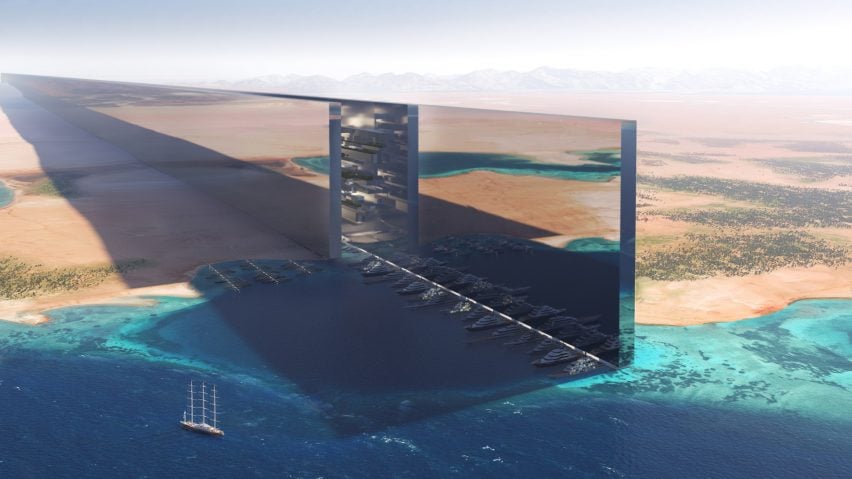
The Saudi Arabian government this week unveiled visuals for a 170-kilometre-long, 500-metre-tall linear city planned as part of the Neom mega-development.
Despite its length and expected population of nine million, The Line will be just 200 metres wide with a transport system promised to connect the two ends within 20 minutes.
The city was designed as an alternative to the traditional circular urban layout, with Saudi crown prince Mohammed bin Salman touting it as “a model for nature preservation and enhanced human livability”.
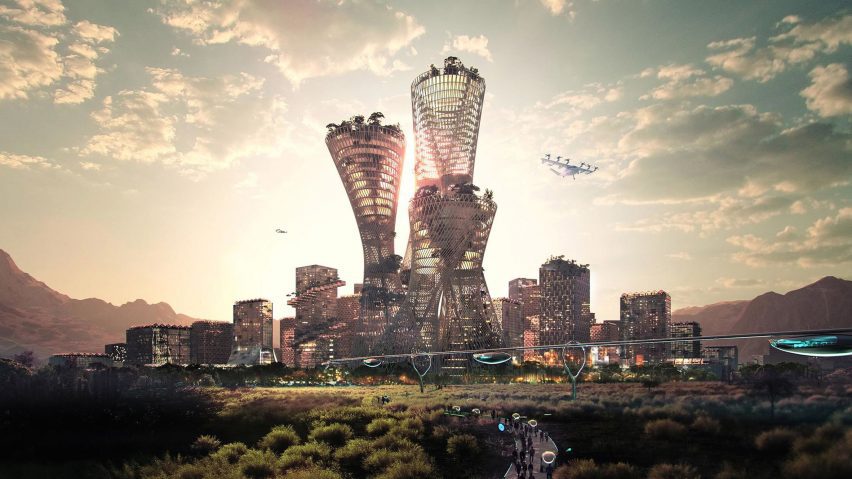
Danish architect Bjarke Ingels and his studio BIG are master planning Telosa, a city for five million set to be built from scratch on an as-yet undisclosed site in the US desert.
The project is the idea of billionaire entrepreneur Marc Lore, who hopes it will become “the most sustainable city in the world”.
Part of Lore’s vision is that the land will be owned by a community endowment, meaning increases in value could fund the city’s development with resident welfare as the priority.
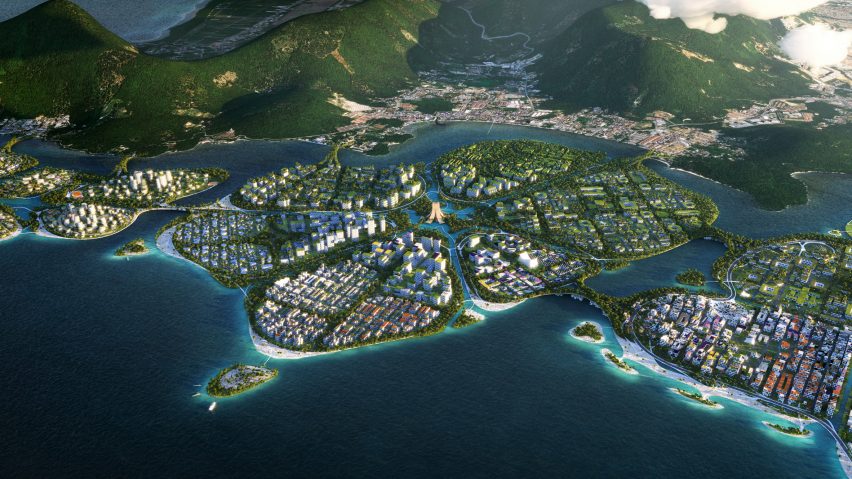
BiodiverCity, Malaysia, designed by BIG
BIG is also master planning BiodiverCity, a 1,821-hectare development of three artificial islands built off the shore of Malaysia’s Penang Island for the state government.
Each lily-pad-like island is expected to house 15,000 to 18,000 residents and be connected by an autonomous transport network with no cars.
Buildings will be mainly constructed using a combination of bamboo, timber and concrete produced from recycled materials, with an ecological buffer around each district to support biodiversity.
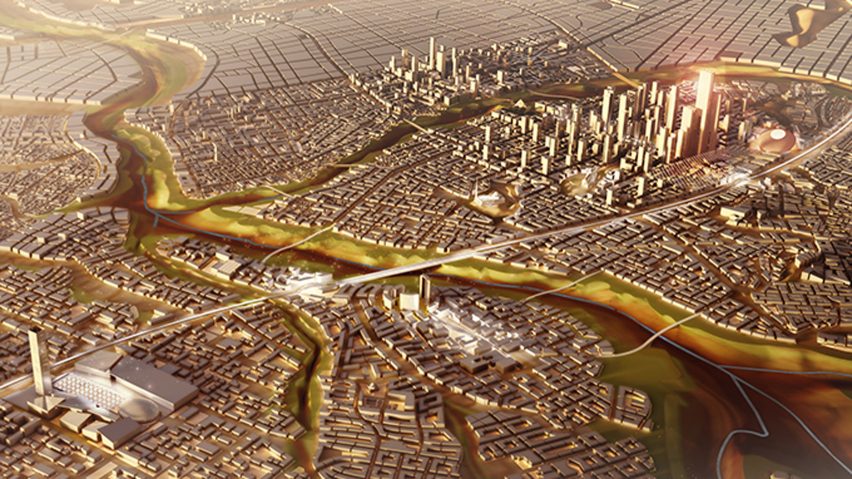
New Administrative Capital, Egypt, designed by SOM
Egypt is building an entirely new capital city for up to seven million people in order to relieve congestion in rapidly growing Cairo, its current capital.
Architecture firm SOM produced a masterplan for the privately funded project, which will cover 700 square kilometres and feature one of the world’s largest urban parks.
Indonesia’s government has also announced major plans to build a new capital city on the island of Borneo. Its existing capital Jakarta is the world’s fastest-sinking city, having sunk by 2.5 metres in the 10 years to 2019.
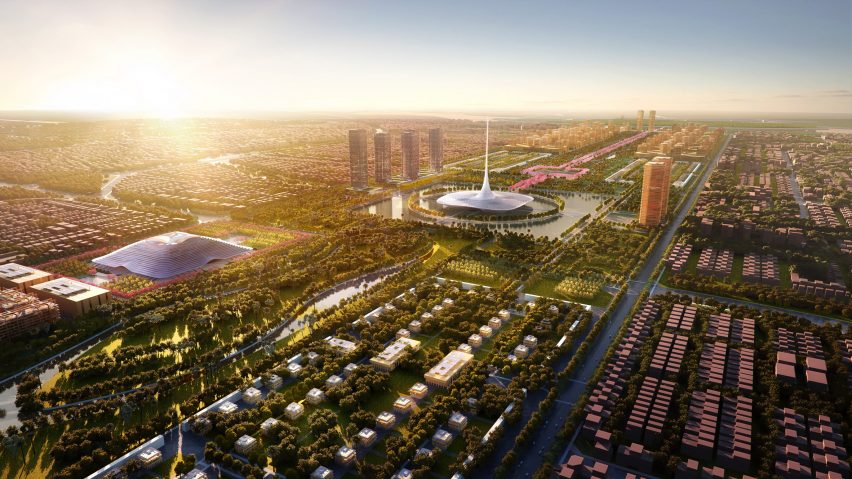
Amaravati, India, designed by Foster + Partners
Set on the banks of the River Krishna, the city of Amaravati will act as the new capital for the Andhra Pradesh state in India.
It will be arranged around a needle-topped government building and see more than 60 per cent of its central district occupied by greenery or water.
“The design brings together our decades-long research into sustainable cities, incorporating the latest technologies that are currently being developed in India,” said Foster + Partners, which is also master planning large neighbourhoods in Ho Chi Minh and Bangkok.

Smart Forest City, Mexico, designed by Stefano Boeri Architetti
Italian architect Stefano Boeri is working on plans for a forested smart city near Cancun that will contain 7.5 million carbon-absorbing plants and trees across its 557 hectares.
It will be designed to house 130,000 people in affordable, plant-covered homes and aims to pioneer a more sustainable way of city living.
“Smart Forest City Cancun is a botanical garden within a contemporary city, based on Mayan heritage and in its relationship with the natural and sacred world,” said Boeri’s studio. “An urban ecosystem where nature and city are intertwined and act as one organism.”
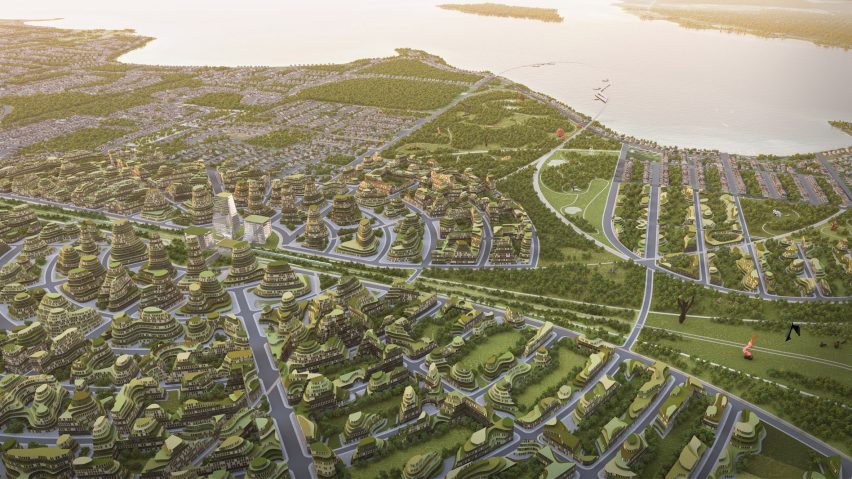
The Orbit, Canada, designed by Partisans
The Orbit is another planned smart city, intended to transform a Canadian farming town through extensive use of fibre optics, drones and autonomous vehicles, with development decisions based on big data.
Toronto firm Partisans has described its design as a modern version of the garden city movement that emerged in the UK in the early 20th century.
It aims to balance new technologies with the existing agrarian setting while growing the town from 30,000 to 150,000 residents.
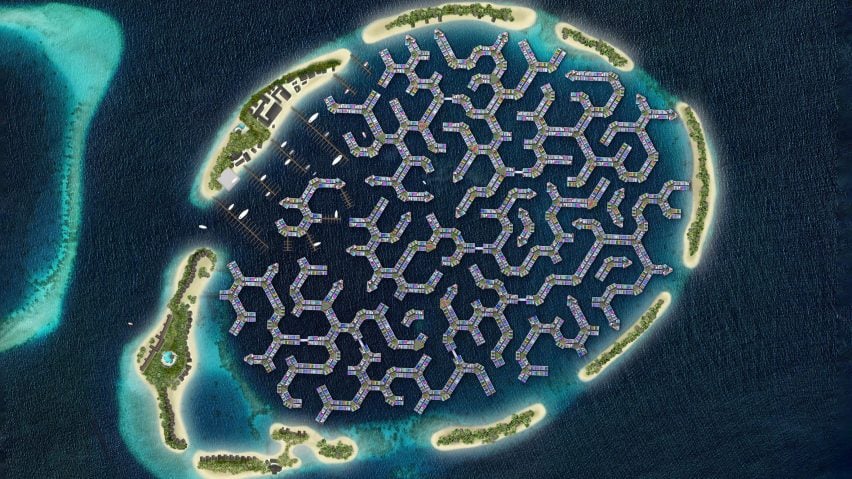
Maldives Floating City, Maldives, designed by Waterstudio
Rising sea levels due to climate change mean much of The Maldives is expected to be uninhabitable by 2050. In response, the country’s government has partnered with architecture practice Waterstudio to design a floating city that will house 20,000 people in a lagoon near its capital as soon as 2024.
Billed by the architects as “the world’s first true floating island city”, it will include 5,000 low-rise floating homes and be built on a series of hexagonal structures that rise with the sea.
Another prototype climate-resilient floating city is being designed by Danish studio BIG together with Samoo and tech company Oceanix for the seas off Busan in South Korea.
Find out more about Maldives Floating City ›
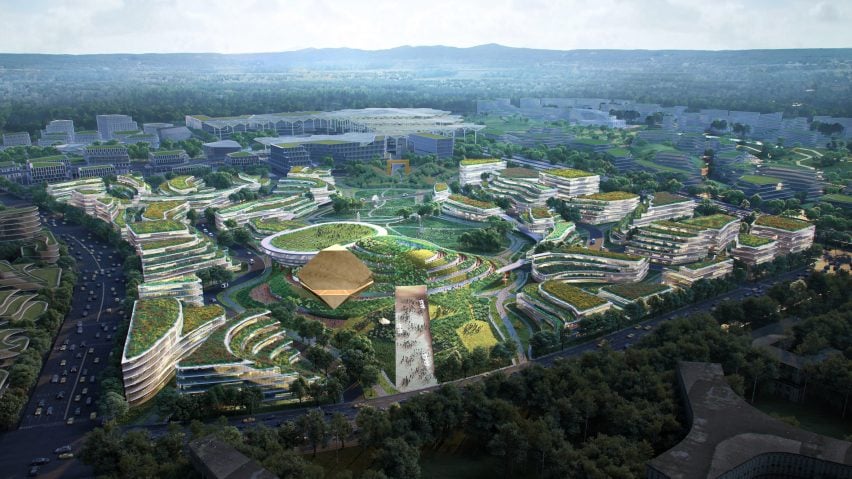
Chengdu Future City, China, designed by OMA
Dutch architecture firm OMA has produced a car-free masterplan for the capital of China’s Sichuan province that it claims challenges conventional urban planning models that are driven by road networks or maximising gross floor area.
Set to occupy a 4.6 square kilometre site, Chengdu Future City will instead focus on the land’s rolling topography, with six distinct zones designed to blend in with the surrounding landscape.
All buildings within each zone will be accessible by foot within 10 minutes, while a “smart mobility network” utilising automated vehicles will connect the city to the rest of Chengdu.
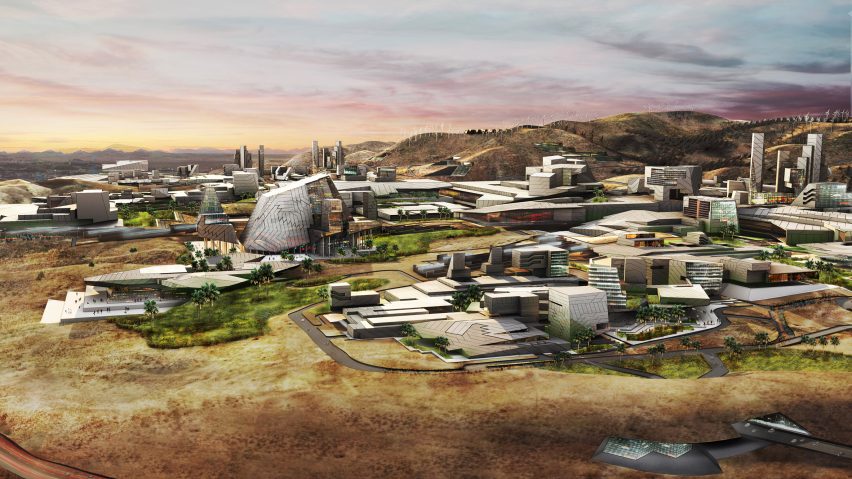
Innovation Park, USA, designed by Ehrlich Yanai Rhee Chaney Architects and Tom Wiscombe Architecture
Cryptocurrency magnate Jeffrey Berns plans to develop part of Nevada‘s desert into a smart city powered by blockchain technology.
With the help of architecture studios Ehrlich Yanai Rhee Chaney Architects and Tom Wiscombe Architecture, he intends to transform the 27,113-hectare plot into a community where people can bank, vote and store data without involvement from governments or third parties.
Maldives Floating City reinvents living in a water world
InHabitat
2022.July.27

This design was in line with the concept of living with nature and learning to improve and respect natural coral. Furthermore, Maldives is the global center for coral protection.

Therefore, the housing are “scarless developments” because of their attempt to not damage the environment on which they are built. Sustainability of the new community is also a top priority, with the developers finding new methods to “interact in a durable way with our surroundings.”
In specific focus here is how to increase sustainability using water. Maldives Floating City is a development of Dutch Docklands in partnership with the Government of Maldives. Masterplan architect for the project was Waterstudio from the Netherlands. The location: a lagoon close to the capital Male and the International Airport at over 500 acres in size.

Additionally, the city is mixed use, with residential, hotels, shopping and restaurants located within the grid. Sales will start soon, and expressions of interest can be made on the city’s website. Most importantly, this is the first floating city with thousands of houses with full governmental support that allows for legal title deeds for owners. The floating city also offers the possibility to obtain a residence permit with the purchase of a house, which means internationals can live here semi permanently in Maldives.
On the other hand, the design of the homes was inspired by the history of this seafaring nation in the tropics. The city is designed as a boating community, using canals as the main infrastructure for shipping and travel. Land-based travel is restricted to walking, biking and noise-free electric scoots, with no cars allowed.

The Maldives Floating City also has green technology, including a smart grid that responds to dynamic demand, weather and climate change. Sustainable development technologies protect the marine ecosystem.
All in all, the city aims to create new habitat for the marine ecosystem it is built on rather than destroying it. New artificial coral banks will be attached to the underside of the city, which can help coral attach and grow naturally. The coral reefs of the lagoon, in turn, act as a natural wave breaker to protect against storm damage.
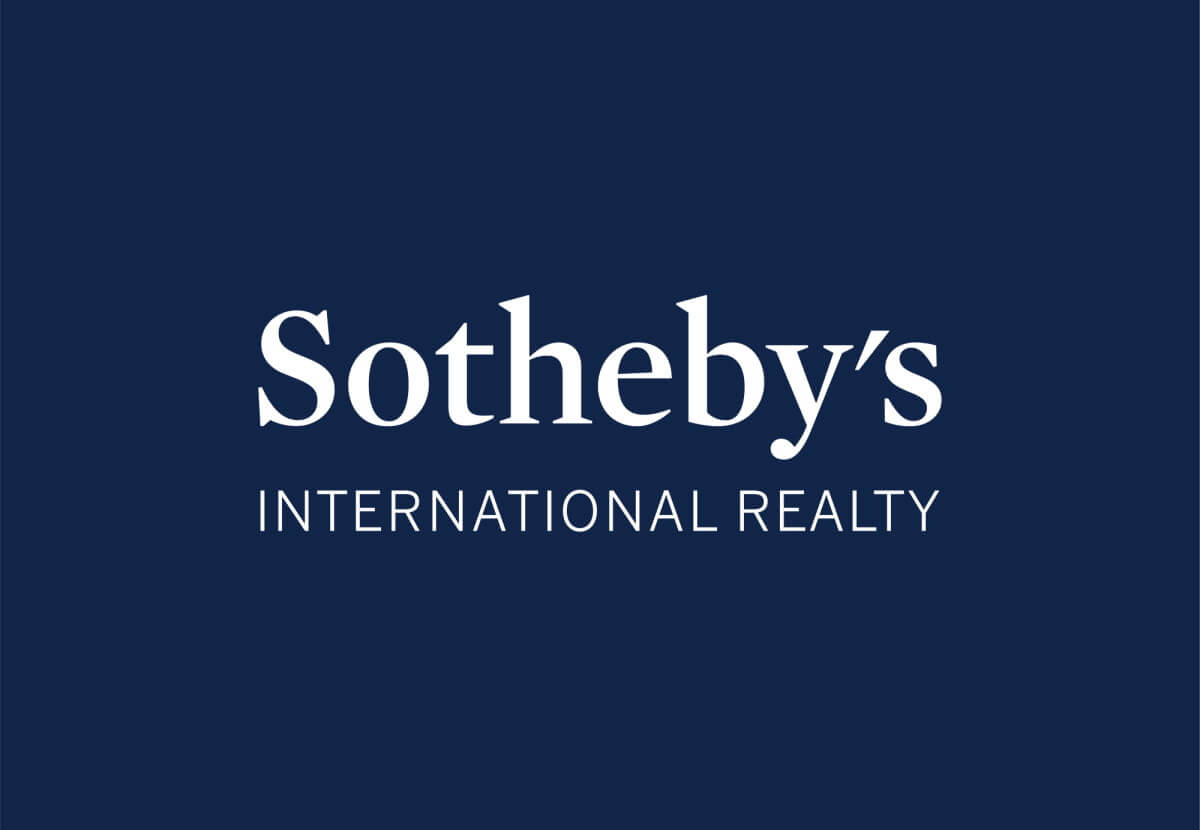
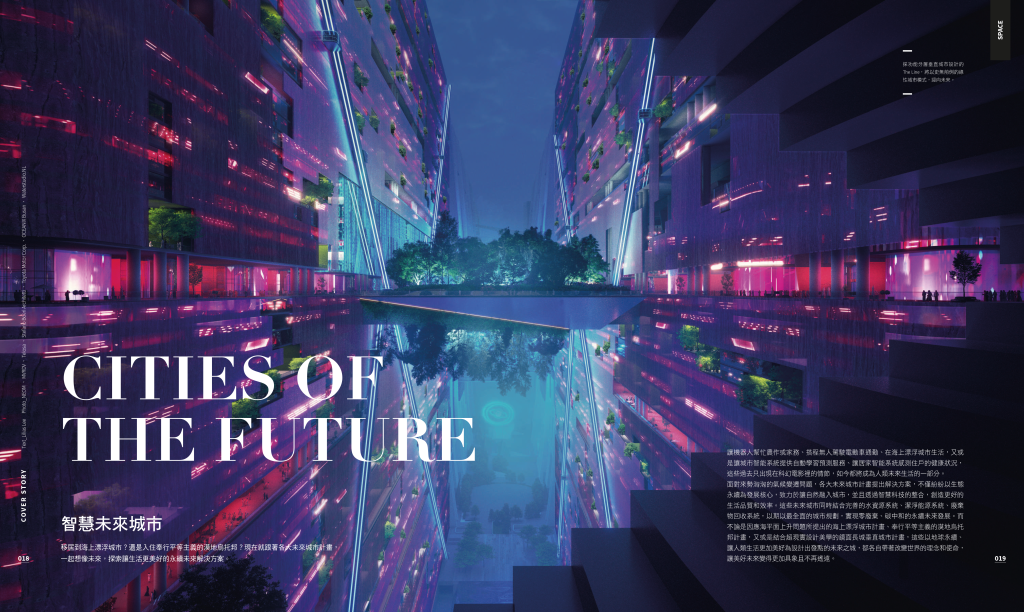
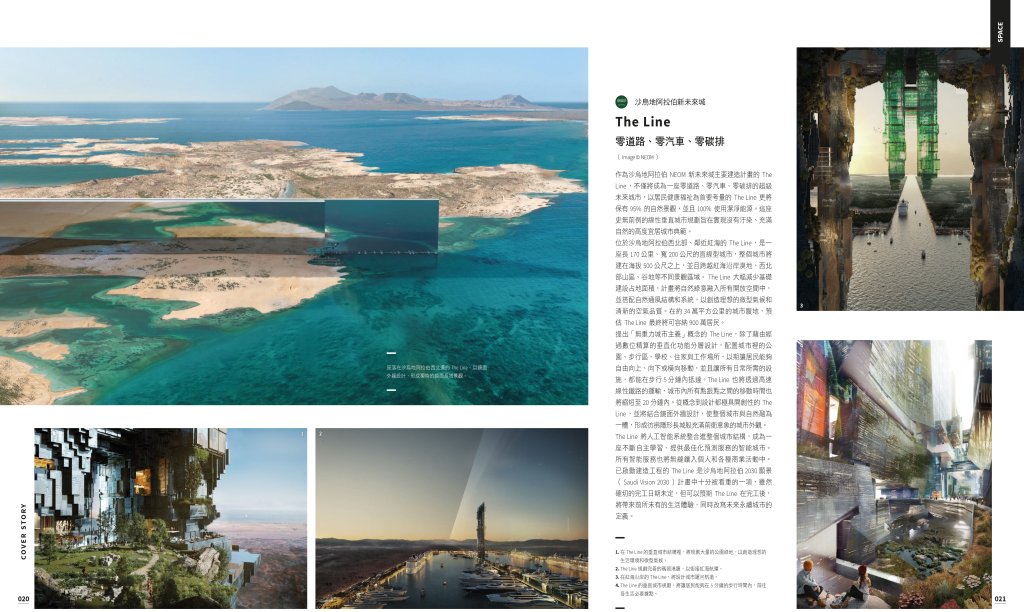

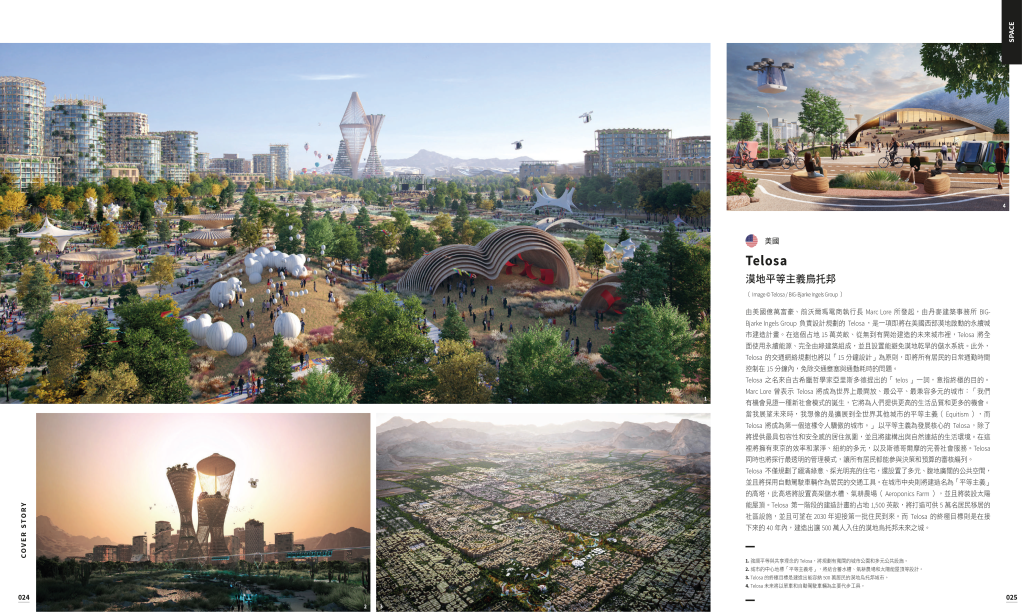

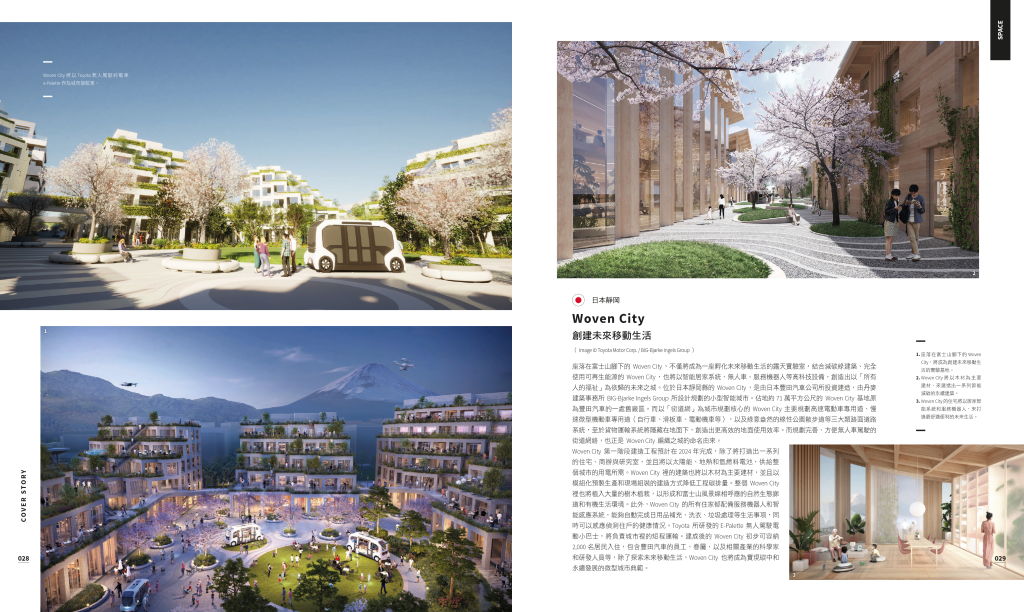
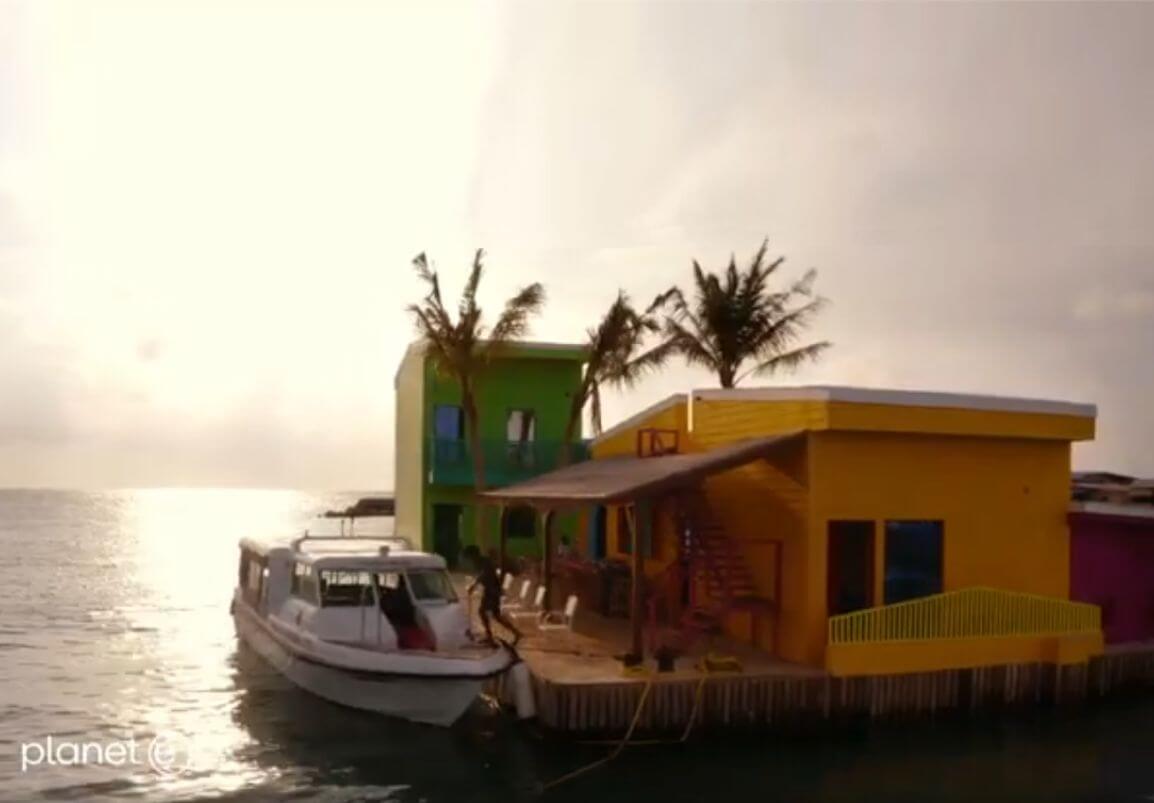





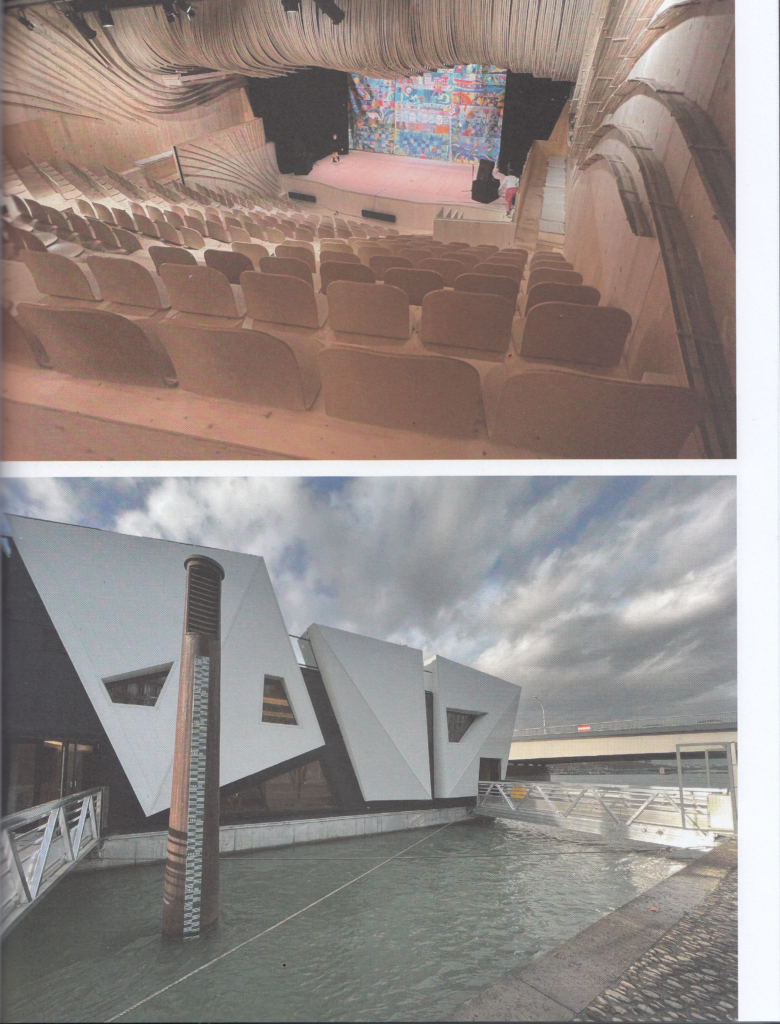

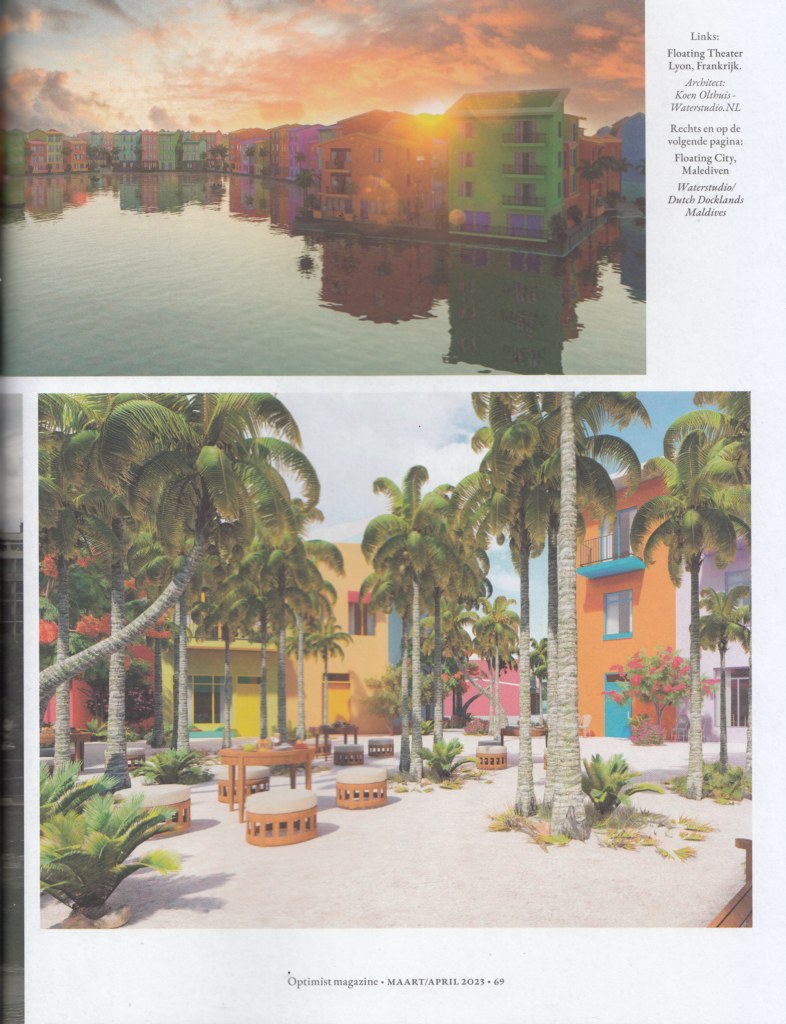
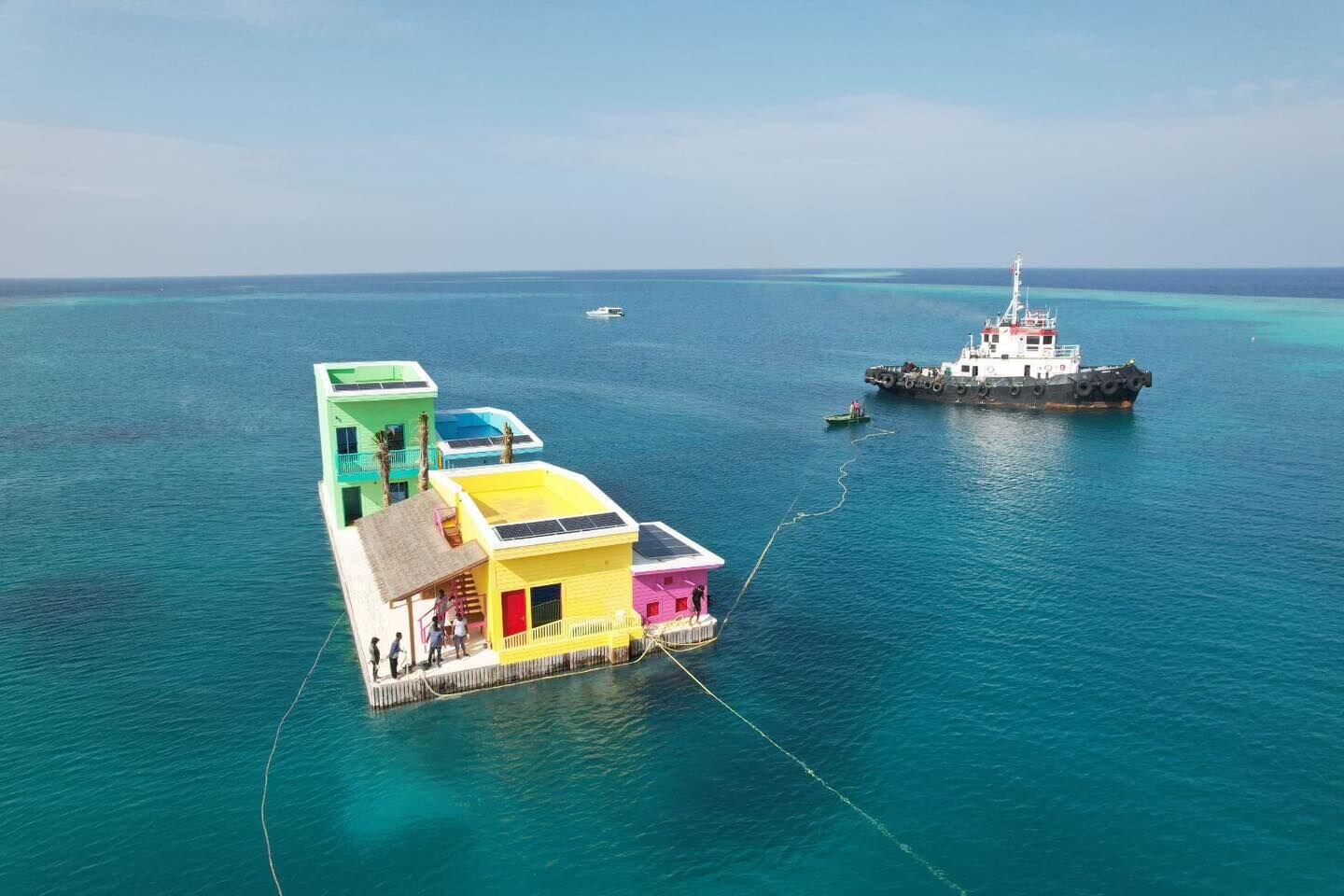
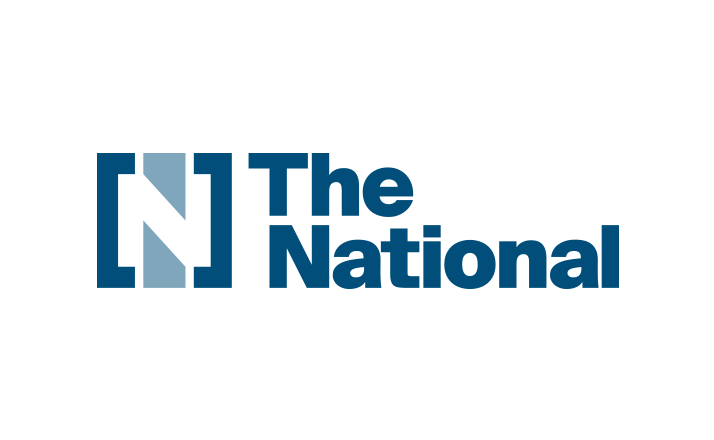
:quality(70)/cloudfront-eu-central-1.images.arcpublishing.com/thenational/IYYB2WDAPVGZBOX7DT4X22P3Q4.jpeg)
:quality(70)/cloudfront-eu-central-1.images.arcpublishing.com/thenational/DYJ27NLJXZFM3B5AZD72WQOTKQ.jpeg)
:quality(70)/cloudfront-eu-central-1.images.arcpublishing.com/thenational/ZH5NQKA53BCZVFTBDJ25Z2TNIM.jpeg)
:quality(70)/cloudfront-eu-central-1.images.arcpublishing.com/thenational/MJZWXQ3NOFHNXERTMCQKZ36MCQ.jpeg)

